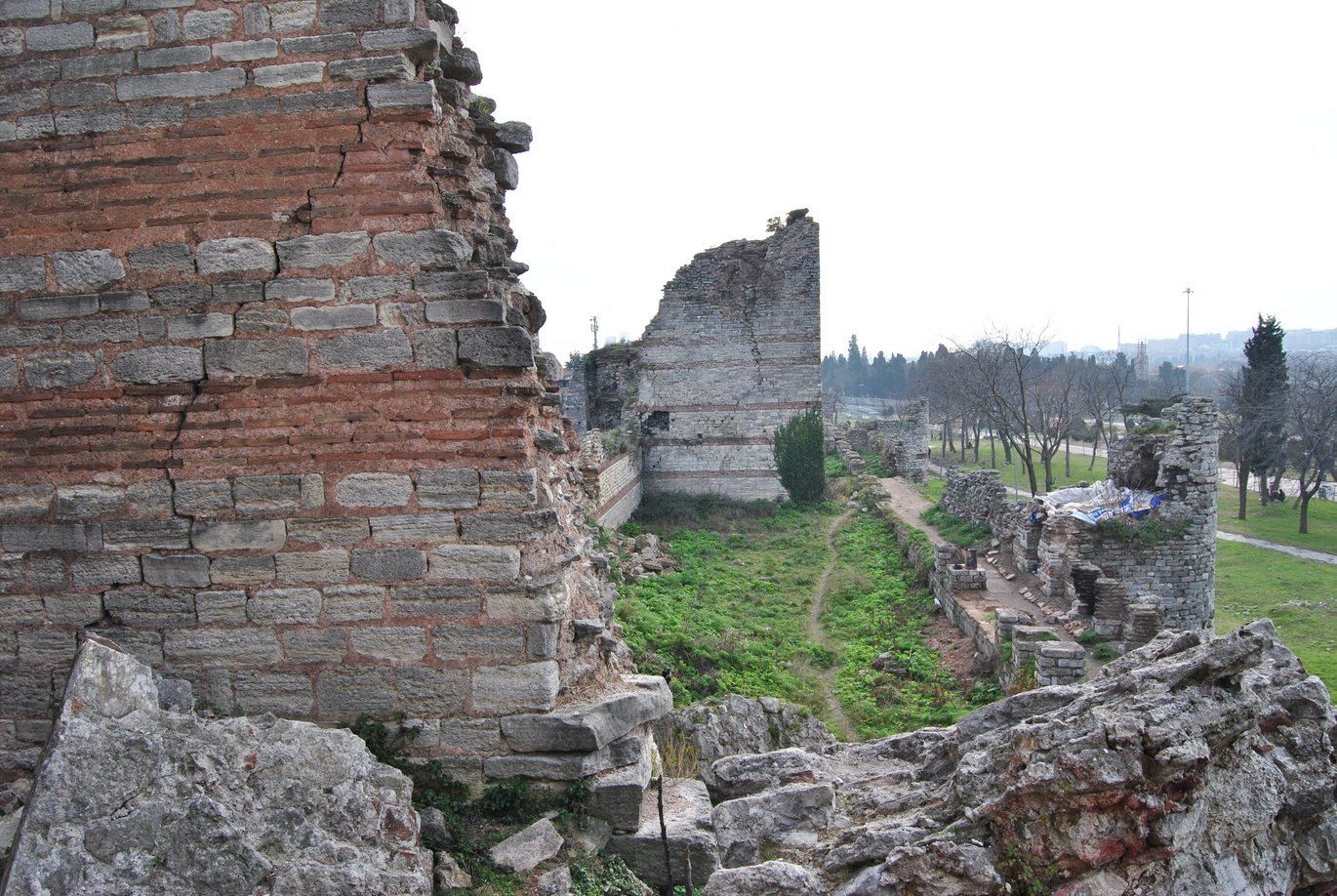Approaching late antique city walls with an empire-wide perspective
Assistant professor Emanuele E. Intagliata discusses ancient urban fortifications and introduces a new edited book.


By Assistant professor Emanuele E. Intagliata
Urban fortifications were the hallmark of late antique cities (4th – 6th century CE). Not only did these impressive masterpieces of engineering provide cities with the defence necessary to make a difference between survival and annihilation in times of need, but they also boosted civic pride. A traveller approaching a city with imposing fortifications would probably wonder about the resources spent by that city to build its walls and towers, and, thence, its level of urban prosperity, before even entering a gate (Fig. 1).
City walls were as difficult to build in antiquity as they are nowadays to study. If well preserved, the length of these monuments, which can often run for kilometres, makes their complete documentation an arduous task. If not fully standing, their fragmentary state of preservation makes it difficult to understand their architectural stratigraphy. New technologies and laboratory analyses, such as photogrammetry or the careful microscopic study of their building components (for example mortar or bricks) have greatly helped archaeologists to reduce the time needed for documentation and opened new avenues of research. Nonetheless, numerous problems still remain.
Scholars concerned with the study of these monuments have often approached city walls with a regional perspective, since the resources and building traditions with which urban fortifications were built were often localised. Hence, for example, comparanda for a particular building technique or an aesthetic trend are generally sought within a relatively narrow geographical focus. This has caused an important divide in scholarship between those who study city walls in the eastern half of the former Roman Empire, and those who are only concerned with those of the western half. Although a local/regional perspective is undeniably of great value to understand the whys and hows urban fortifications were constructed, several phenomena or trends, such as the reuse of earlier stonework or the siting of fortifications, can be studied with a wider approach.
An attempt to break this traditional divide has recently been made with a book entitled City walls in Late Antiquity: an empire-wide perspective (Oxford: Oxbow, 2020 – Fig. 2). The book collects a wide variety of contributions written by world-leading experts of the topic. It aims to go beyond the regionalism of modern literature by presenting to the readers a selection of case studies from all over the Roman Empire, from present-day Spain to Syria through France, Italy and Turkey. In so doing, this book aims to reflect on the importance of the study of these monuments for shedding light on urban historical narratives and the possibility of approaching city walls in novel ways.
Intagliata, E. E., Barker, S. & Courault, C. (eds.) (2020). City walls in Late Antiquity: An empire-wide perspective, Oxford: Oxbow (available for purchase at https://www.oxbowbooks.com/dbbc/city-walls-in-late-antiquity.html).
